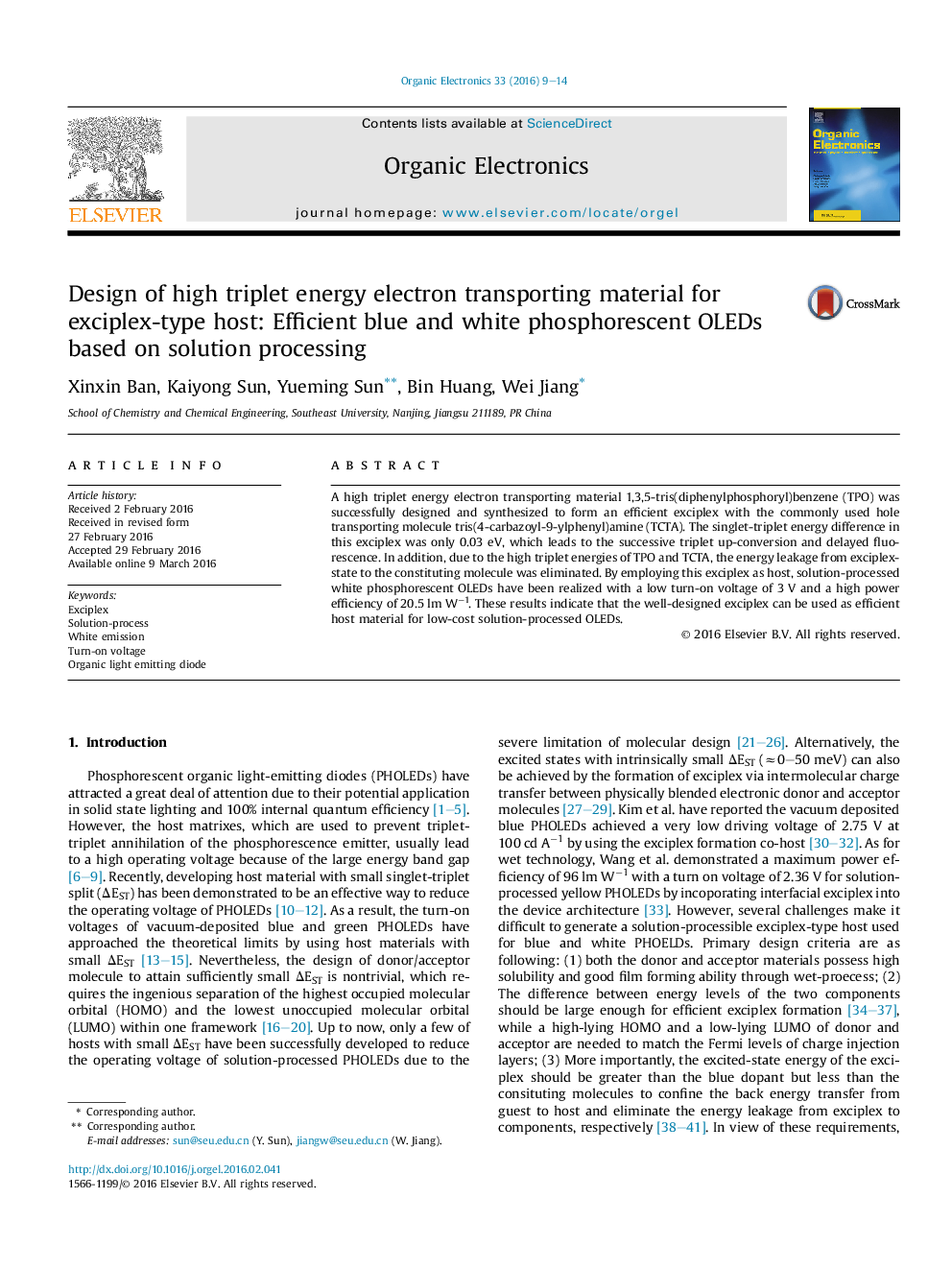| Article ID | Journal | Published Year | Pages | File Type |
|---|---|---|---|---|
| 1264206 | Organic Electronics | 2016 | 6 Pages |
•Due to the meta-linking configuration, the triplet energy of the newly designed electron-transporting material is 3.15 eV.•The small ΔEST of the exciplex leads to the successive triplet up-conversion in the transient decay curves.•Due to the high triplet energy, the energy leakage from exciplex-state to the constituting molecule was eliminated.
A high triplet energy electron transporting material 1,3,5-tris(diphenylphosphoryl)benzene (TPO) was successfully designed and synthesized to form an efficient exciplex with the commonly used hole transporting molecule tris(4-carbazoyl-9-ylphenyl)amine (TCTA). The singlet-triplet energy difference in this exciplex was only 0.03 eV, which leads to the successive triplet up-conversion and delayed fluorescence. In addition, due to the high triplet energies of TPO and TCTA, the energy leakage from exciplex-state to the constituting molecule was eliminated. By employing this exciplex as host, solution-processed white phosphorescent OLEDs have been realized with a low turn-on voltage of 3 V and a high power efficiency of 20.5 lm W−1. These results indicate that the well-designed exciplex can be used as efficient host material for low-cost solution-processed OLEDs.
Graphical abstractDue to the high triplet energies of constituting molecules and exciplex, the energy leakages from the excited-state to the components or the dopants were successfully eliminated.Figure optionsDownload full-size imageDownload as PowerPoint slide
